Annual Events
January
-
1st
New Year’s Day available for participation
Our gate opens at 0:00 am on New Year’s Day. Joya-no-kane (ringing of a temple bell 108 times) starts at 2:00 am. The first 108 visitors to arrive can strike the bell. Priests chant sutras in front of hatsu-mizu (water which is scooped for the first time on New Year’s Day) from 4:00 am.
-
from 1st to 3rd
Hatsu-moude/ Shushō-e (New year’s service) available for participation
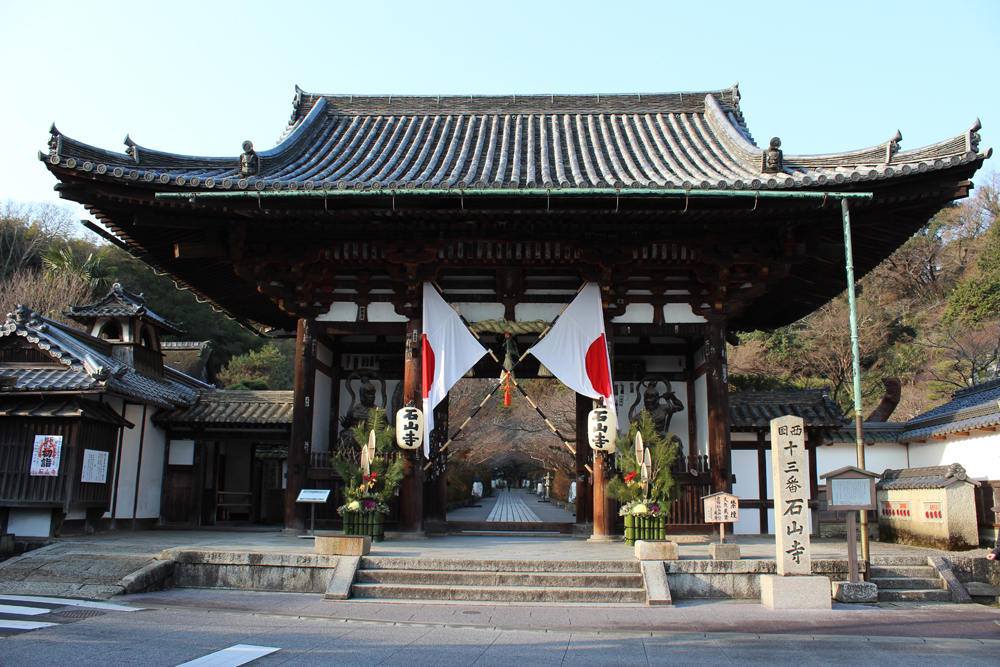
Many people go out for hatsu-moude, the first temple visits of a year, and pray for a fortunate year ahead during the first few days of January. Shushō-e (a service of a new year) is held from 1:00 pm during this period (January 1–3), wishing for the year of good health, happiness, and prosperity.
-
18th
Hatsu-Kannon/ Hatsu-Goō-San available for participation
Hatsu-Kannon (January 17–18) is the first festival days of Kannon (Bodhisattva of Compassion) of a year. Priests offer a prayer to Kannon from 10:00 am on the 18th. It is believed that you can receive more fortunes if you visit the temple on the day.
Hatsu-Goō-San, the first flea market in a new year, takes place from 9:00 am on the same day. A large number of visitors enjoy shopping in front of the gate of Ishiyamadera. Goō-San (a flea market) opens on the 18th of every month, where nearly 30 stalls sell antiques, clothes, and vegetables. -
28th
Hatsu-Fudō available for participation
The first festival day of Fudō Myōō (Acalanātha) in a given year is called Hatsu-Fudō. A sacred fire (goma) is burned on an altar in front of a statue of Fudō Myōō from 10:00 am on the 28th of each month.
February
-
3rd
Hoshi Matsuri Festival (the service to pray for good luck of the year)
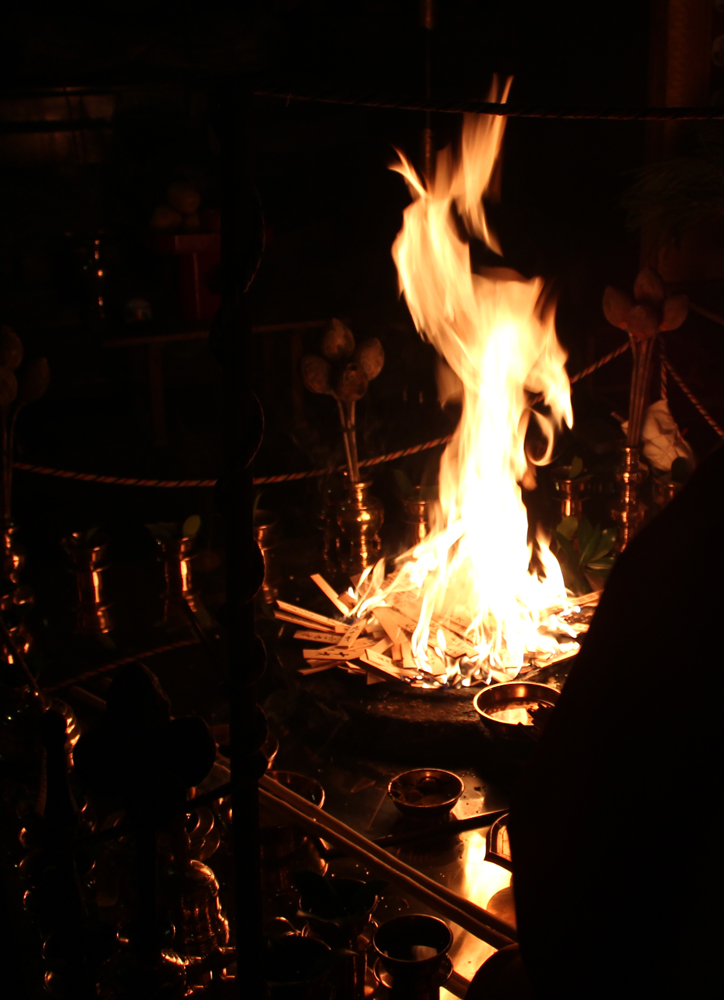
Setsubun (February 3) refers to the day before the beginning of spring. Hoshi Matsuri Festival is held on that day when the new season starts, wishing for better luck and greater purification in a year.
It is believed that everyone is born under a lucky or unlucky star (hoshi) represented by the Big Dipper, and that the star, the destiny, in other words, changes every year. You pray for the avoidance of evil deeds and accidents if you’re ill-starred, or for more success in life if the year is a fortunate one for you. -
from Mid to March Mid
“Ume-Tsukushi” Plum Blossom Festival available for participation
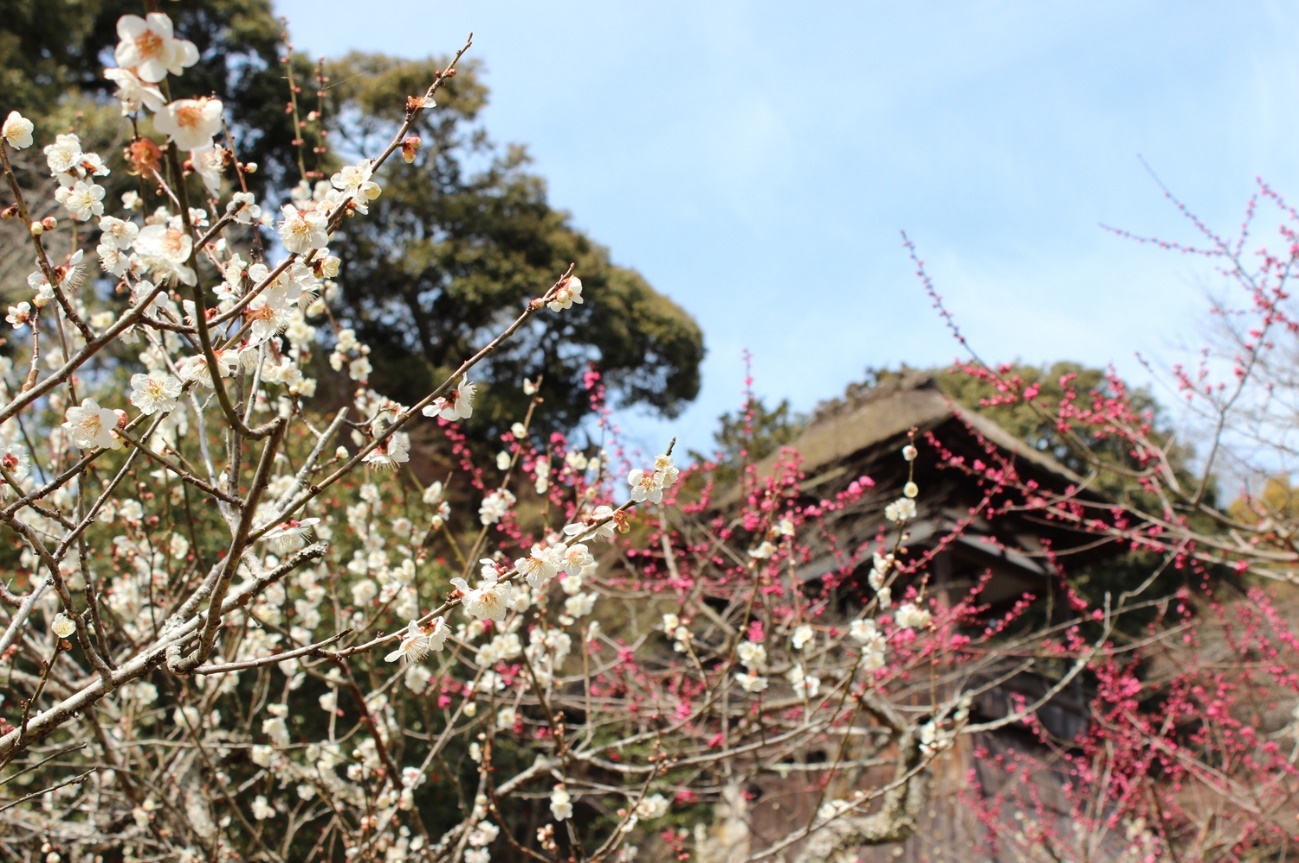
As plum blossoms (ume) begin to bloom, we hold “Ume-Tsukushi” Plum Blossom Festival. Our temple is filled with light coral colored flowers as the name of the festival suggests. More than 100 dwarf ume trees are displayed throughout the precinct of Ishiyamadera. You can also enjoy approximately 400 ume trees in full bloom in three ume gardens: Nioi-no-sono (the garden of fragrance), Kochi-no-sono (the garden of an east wind), and Suisen-no-sono (the garden of daffodils).
Food, sweets, and tea related to ume are served in shops and restaurants near Ishiyamadera as “omotenashi (hospitality) with ume” for a limited time.
March
- from 18th to 30th June Exhibition of Ishiyamadera and Murasaki Shikibu (Lady Murasaki) available for participation
April
-
21th
Memorial Service of Kōbō Daishi’s Nirvana
It is one month after the day when Kōbō Daishi (the founder of the Shingon sect, also known as Kūkai) attended Nirvana (March 21). A memorial service is held at Mieidō, where priests chant sutras in front of his picture. Flowers of cherry blossom are offered on an altar in Mieidō every year. You cannot enter but can see the building from outside.
May
-
5th
Ishiyama Matsuri Festival available for participation
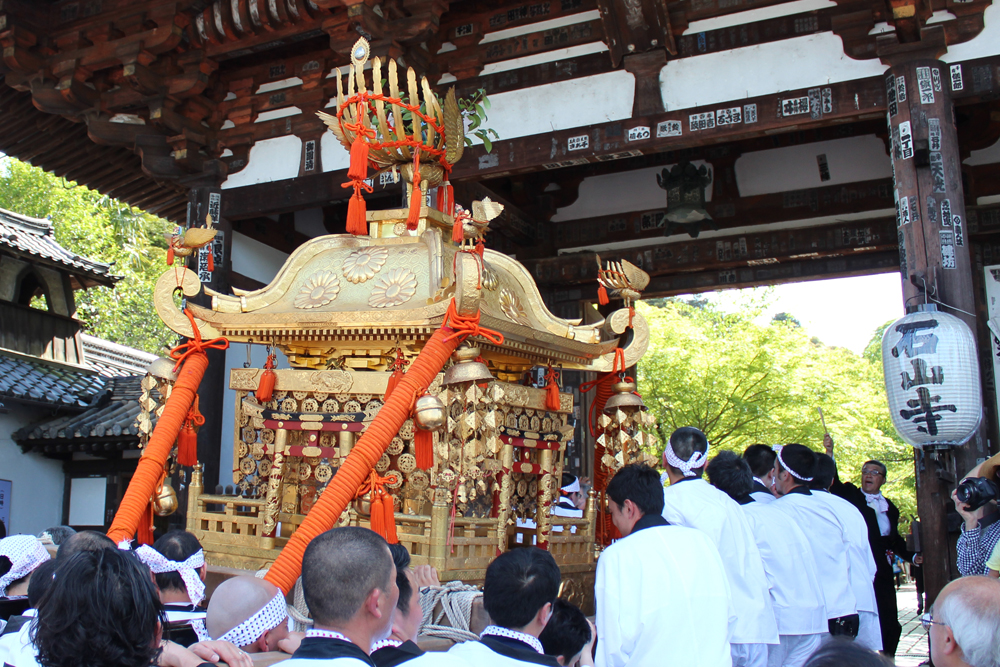
Ishiyama Matsuri Festival is a big festival of Sanjūhassho-gongen-sha, the shrine which protects Ishiyamadera. Sanjūhassho-gongen-sha deifies from Japanese ancient deities to the 38th Emperor Tenji. It stands on huge wollastonite (nationally designated natural treasure) in the east of Hondō (main shrine).
In the festival, divine palanquins called mikoshi depart Shingū Shrine, which is located in the south of Ishiyamadera. Carriers then travel around the precinct of Ishiyamadera. The heavy mikoshis finally climb steep stone-steps toward Hondō——it’s simply overwhelming. -
8th
Hana Matsuri Festival (Buddha’s Birthday Festival) available for participation
Hana Matsuri Festival celebrates Buddha’s birthday, so it is also called Gōtan-e (nativity day). It is held in Ishiyamadera one month after the day when the festival is generally organized in other temples.
We enshrine a statue of Buddha in Hanamidō, the building which is decorated with flowers (hana), and have a celebration by pouring sweet hydrangea tea on the figure. You can have a cup of hydrangea tea in Hondō. -
3rd Sunday
Ao-Oni Matsuri Festival available for participation

Ao-Oni Matsuri Festival is the day to commemorate Rōchō Risshi (Buddhist priest). A memorial service is held in front of a five-meter statue of ao-oni (blue ogre) made of cedar leaves on the third Sunday of every May.
Rōchō Risshi was a scholar priest who devoted himself to a collection of complete Buddhist scriptures and sacred sutras of Ishiyamadera as well as maintenance of them. He vowed to become an ogre after death and guard the holly texts stored in Ishiyamadera.
August
-
9th
Sennichi-e Festival available for participation
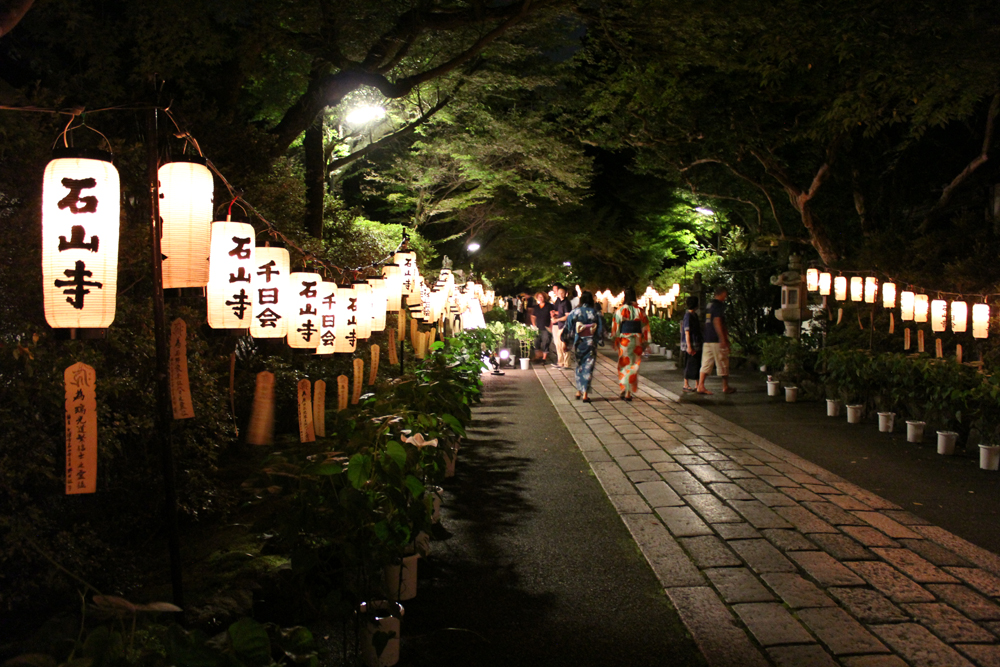
Sennichi-e Festival refers to the day when one temple visit brings one-thousand-day (sennichi) virtue. We light countless lanterns from which wooden grave markers are hanged throughout the precinct. Priests of Ishiyamadera including a head priest pray for the repose of ancestors in front of a statue of Kannon at 10:00 am and 7:00 pm.
-
15th
The service to pray for world peace
We recite sutras wishing for a peaceful world on the anniversary of the end of WWII every year. The temple bell is tolled with a prayer at noon.
September
- from 1st to 30th November Exhibition of Ishiyamadera and Murasaki Shikibu (Lady Murasaki) available for participation
-
August 15th of lunar calender (mid autumn)
Shūgetsu-sai Festival (Harvest Moon Festival) available for participation

It said that Murasaki Shikibu got inspiration for “Genji Monogatari” (The Tale of Genji) from the moon reflected in Lake Biwa during her stay in Ishiyamadera. The legend is related to Shūgetsu-sai Festival, which takes place on the days in the middle of every autumn when the moon is beautiful to see. You can enjoy “the harvest moon of Ishiyama” from Tsukimi-tei during the period, which is famous as one of the Eight Views of Ōmi.
November
-
Mid to late
Atarayo Momiji (Autumn Color Illumination Event) available for participation
Click here for details
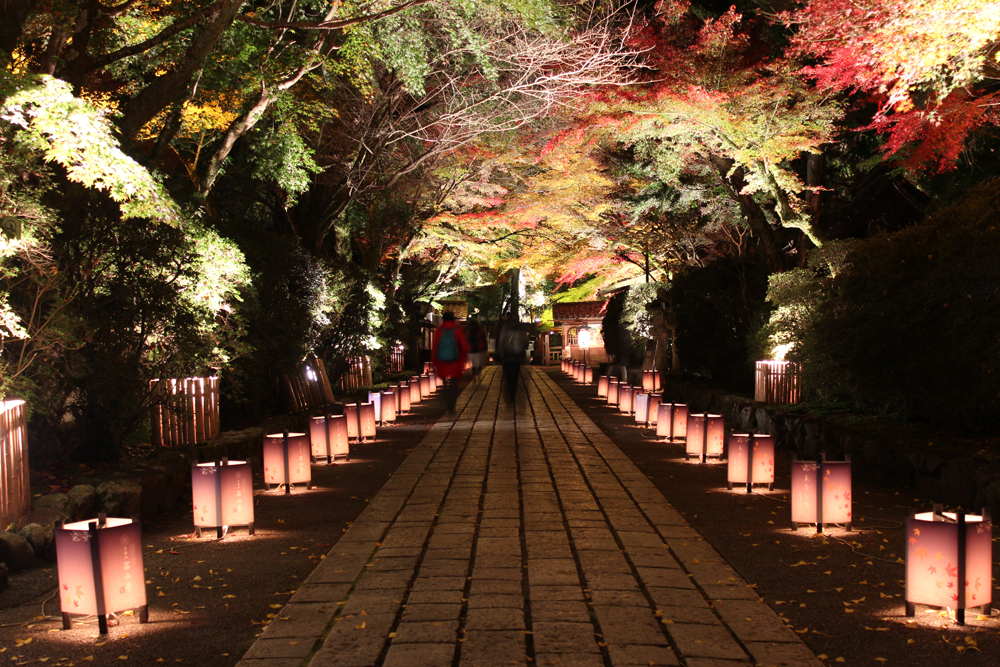
Magical beauty of architecture of National Treasurewith Japanese Maples.
December
-
from 6th to 8th
Butsumyō-e available for participation
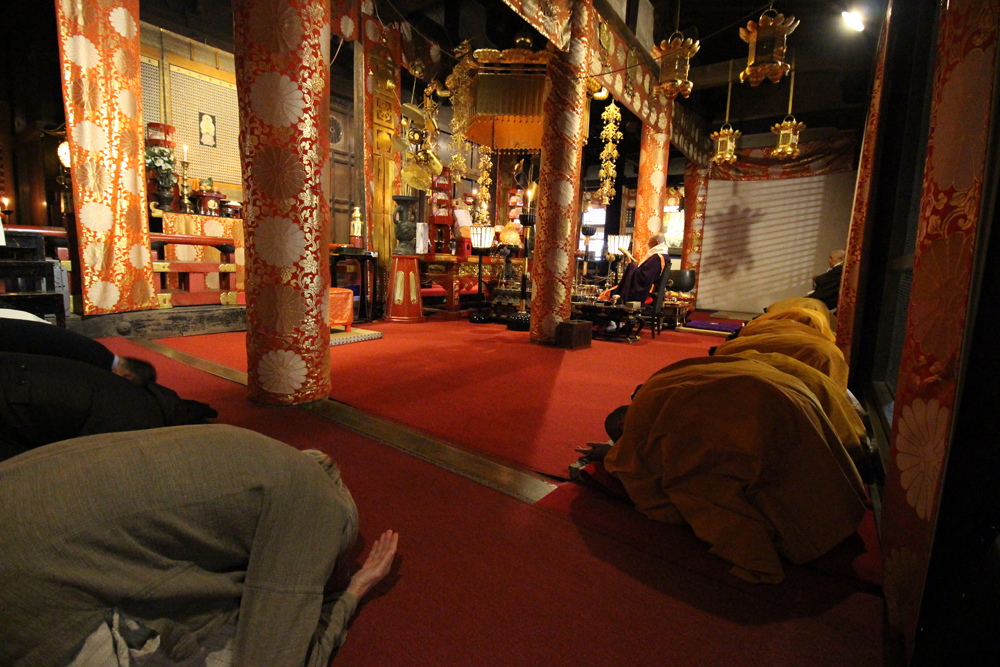
Butsumyō-e is a service in which we chant the names of three thousand Buddhas to extinguish our sins. It is held in Ishiyamadera on December 6–8 every year.
-
18th
Shimai-Kannon available for participation
The last festival day of Kannon in a year is called Shimai-Kannon. Priests chant sutras solemnly from 10:00 am, informing of our safety for the year and expressing gratitude toward Kannon.
- 26th Mochi Pounding for New Year
-
28th
Shimai-Fudō available for participation
Shimai-Fudō is the final festival day of Fudō Myōō of a year. A solemn service starts at 10:00 am in which sutras are recited giving thanks for the peaceful year to Fudō Myōō.
- 31st New Year’s Eve

